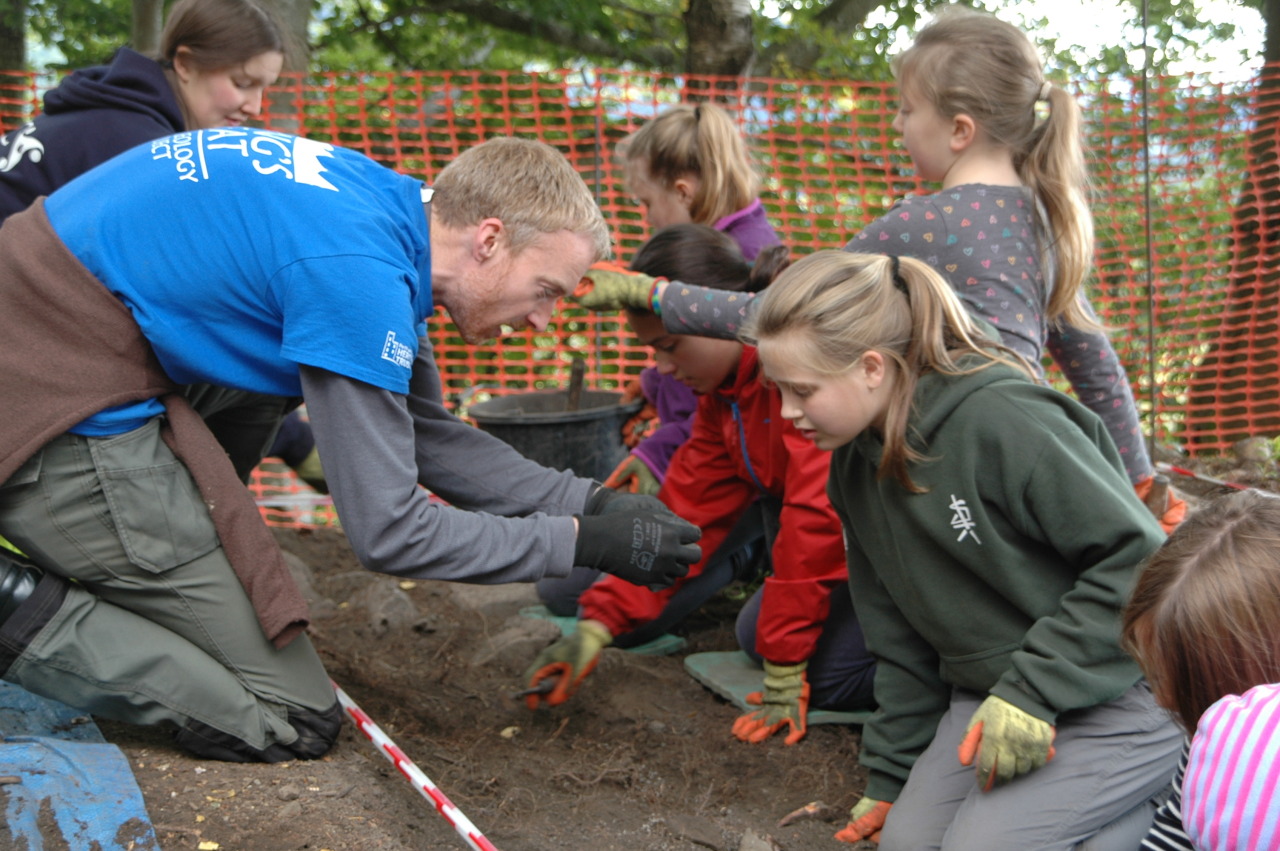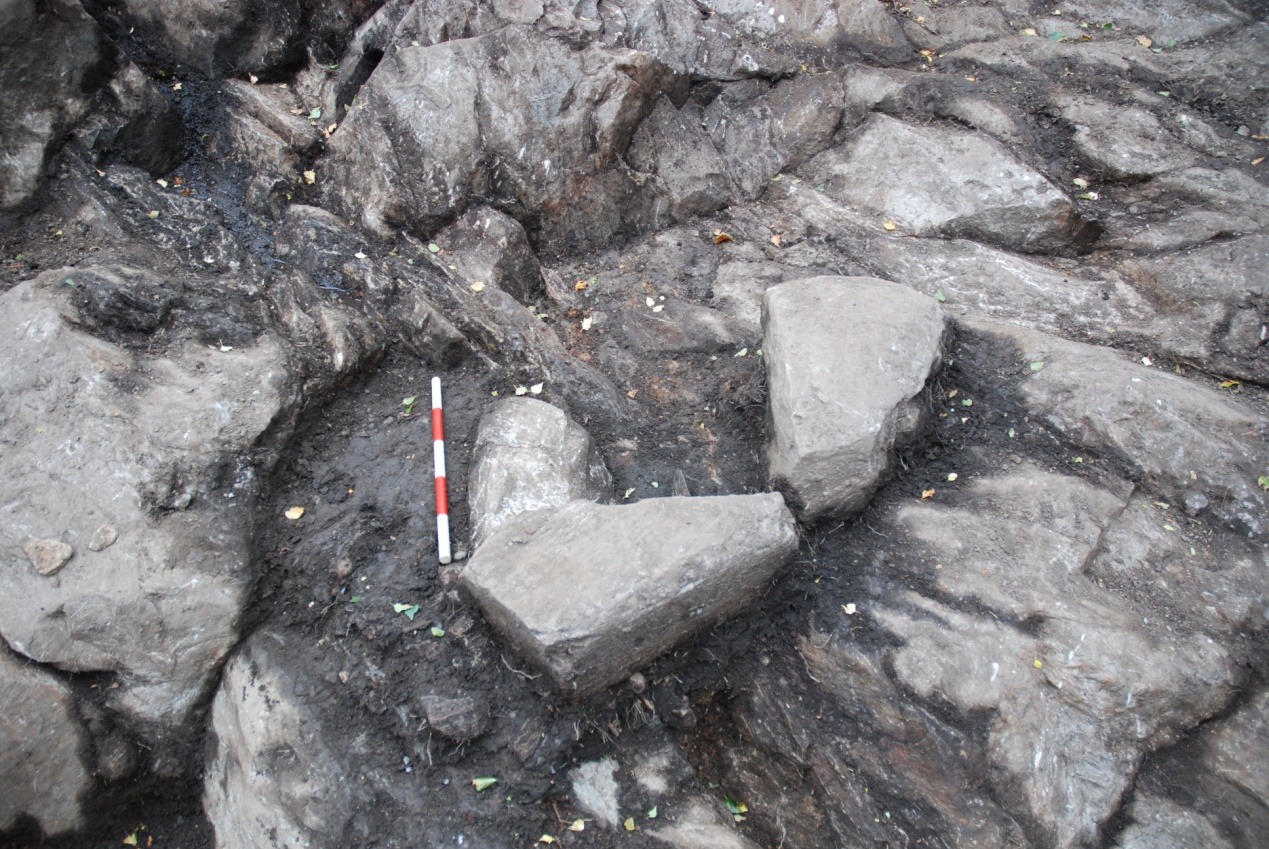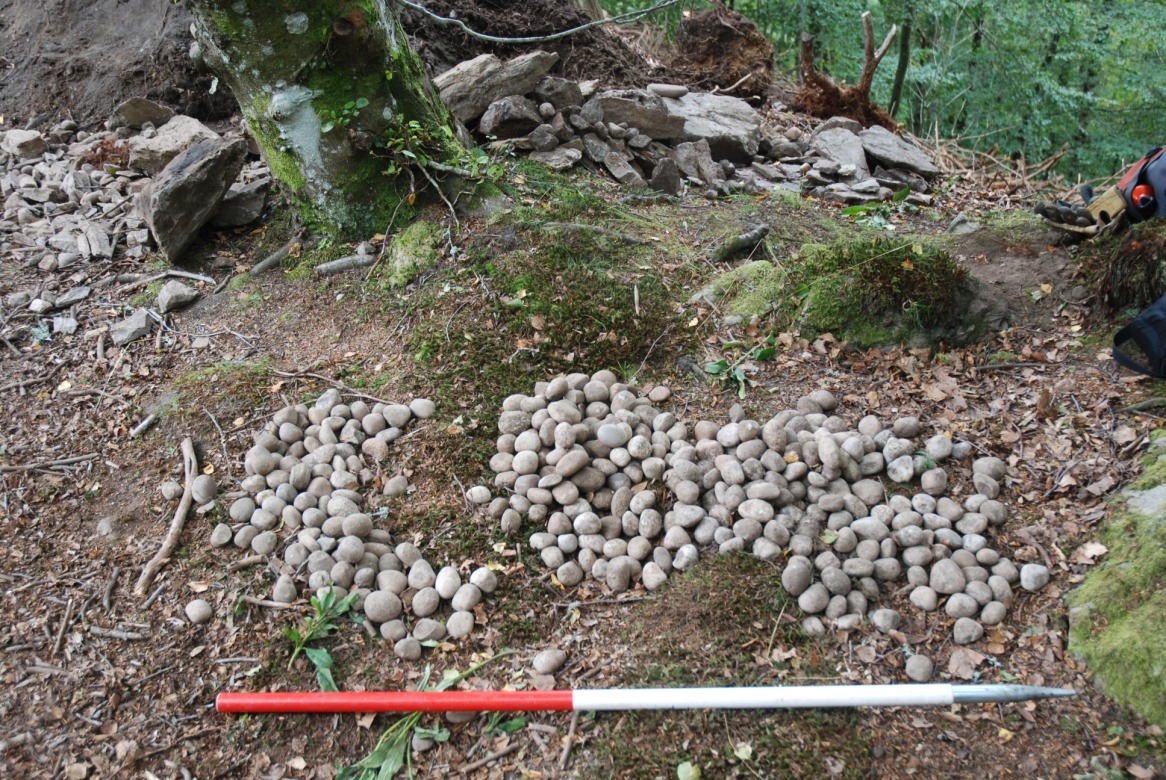Evidence of Early Historic Metal Working Found at King’s Seat, Dunkeld!
This September marked the first season of excavations in an exciting three year project investigating the hillfort of King’s Seat, above Dunkeld. Over 70 volunteers and local school pupils joined Perth and Kinross Heritage Trust, Dunkeld and Birnam Historical Society and professional archaeologists from AOC Archaeology Ltd to unearth an impressive assemblage of early historic metalworking artefacts and possible slingshot ammunition.
The King’s Seat Hillfort Archaeology Project offers volunteers from the local and wider community, including local primary and secondary schools, the opportunity to help professional archaeologists uncover the history of this enigmatic hill top site whilst receiving training in archaeological skills. The project is a partnership between Perth and Kinross Heritage Trust (PKHT) and the Dunkeld and Birnam Historical Society (DBHS) supported by professional archaeological contractors AOC Archaeology Ltd and funded by Heritage Lottery, the Gannochy Trust, and Scottish & Southern Electric’s Griffin and Calliacher Windfarm Community Fund.
King’s Seat hillfort is located to the north of Dunkeld on a major bend in the river Tay and has long been inaccessible due to rhododendron growth over the summit. However, thanks to a gargantuan effort from DBHS volunteers in 2016, the summit of King’s Seat is now free from vegetation, meaning that the fort can to be visited, appreciated and excavated.
The fort’s defences surround a central ‘citadel’ enclosure measuring about 35m x 25m, situated at the summit of the hill with a cascading series of ramparts below that enclose a flight of lower terraces.
The first season of excavations at King’s Seat took place in September with 39 volunteers and 35 primary and secondary school pupils climbing the steep slopes of the hill to help with the dig over the two week duration. Four trenches were opened this year: Trench 1 – located over a series of terrace steps down the west side of the summit; Trench 2 – over a large mound situated at the highest point of the hill adjacent to a large glacial erratic boulder; Trench 3 – positioned over what looked to be the end of the summit rampart next to a possible entranceway; and Trench 4 – looking at the flat area enclosed by the rampart surrounding the summit of the hill.

The excavations revealed that the rhododendron growth on the summit of the hill and remodelling of some of the lower banks by the Atholl Estate in the Victorian period has had a significant impact on the condition of the shallow archaeological deposits. Despite these challenges there have been some very important and interesting discoveries:
- The enclosing rampart walls and banks of the hillfort were found to have different constructions with the lower terrace walls being made of earth and large stone boulders whilst the the summit enclosure forming a more coherent formal wall with inner and outer faces. This variation in construction suggests that the site has had different phases of activity in the past;
- The bedrock of the upper area of the summit looks to have been clear of soil in the past with interesting slot features found cut into the rock.
“Comparisons can be drawn between the holes drilled into the rock on King’s Seat and St Fillan’s Chair on Dundurn near Loch Earn, where a wide ledge was sculpted from an outcrop to form a sort of rock seat. The lead archaeologist working on Dundurn theorised that this ‘seat’ could have been an inauguration seat for the rulers of Strathearn. The features at King’s Seat could have served a similar purpose.” Cathy MacIver, AOC Archaeology Ltd

- Finds of animal bones, claws and horns indicate animals were being processed on the site, which could have been for domestic purposes, feasting or related to craft activities taking place.
- The big discoveries that have the archaeologists really excited are the metal working waste, crucible fragments and stone moulds which indicate that precious metal working was taking place on the site. Two of the moulds are mirror shaped and are similar to examples found at Portmahomack, Tarbat and Garranes, Ireland.
“one of the reasons we’re so excited about these moulds is that their shape is characteristic of metalworking in the early historic, or Pictish period (c.600-900 AD). So whilst we wait for the radio carbon dates to come back from the lab, finds like these can help us work out when the activity at King’s Seat was taking place.” Gavin Lindsay, PKHT Outreach Officer
- A cache of small rounded stones was found near the large rocky outcrop on the summit which may have been collected for using as slingshots. The stones found at King’s Seat look similar to stones with similar form and dimensions that have been identified at a number of hillfort sites across the UK.

When considered together, the material culture recovered from King’s Seat is hugely important and clearly indicates in situ activity on the site. While it seems obvious to the modern archaeologist that some sort of elite would have controlled, if not occupied hillfort sites, it is still rare for such sites to produce such a wealth of evidence. The fact evidence for metal working was identified in every trench certainly suggests that the site was hugely important in the production of prestige metalwork and, similarly to important high status early historic hillforts such as Dunadd and Dundurn, may have been a centre of production. Dundurn, Dunadd and King’s Seat all share similar characteristics including topographic location, working and utilisation of exposed bedrock outcrops.
The findings from this year’s excavations are now available in the Data Structure Report which can be viewed and downloaded on the King’s Seat Project page.
The team will be back digging at King’s Seat in September 2018 with a living history event in Dunkeld and guided walks to the site also being planned for Scottish Archaeology Month. If you would like to find out more about the project, the discoveries from this year’s dig, the placename survey that’s been completed or about volunteering on next year’s dig then log on to www.pkht.org/projects/kings-seat.